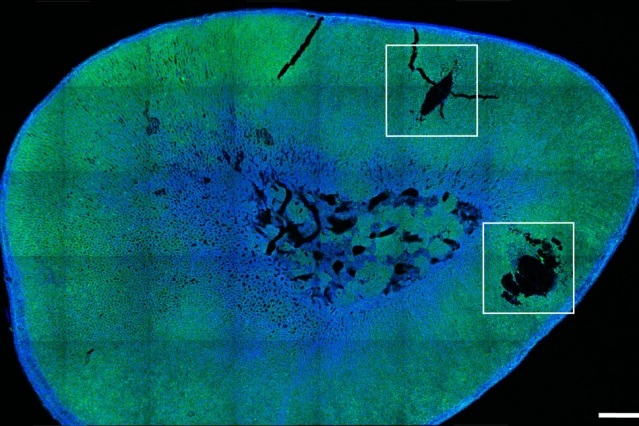Sponsors

Scale of Annual Research Funding
The annual dollar volume of activities in the Research Laboratory of Electronics (RLE) at the Massachusetts Institute of Technology (MIT) is approximately $70M. Our principal sponsors are agencies of the Federal government—either directly or through collaborative projects with industry and peer non-profit institutions—and industry. Remaining RLE activities are funded from foundations, MIT Lincoln Laboratory, or by the discretionary resources of RLE and its investigators.
Department of Defense (DOD)
The agencies of the DOD, which include the Defense Advanced Research Projects Agency (DARPA), the Office of Naval Research (ONR), the Air Force Office of Scientific Research (AFOSR), and Army Research Office (ARO), provide approximately 33% of the sponsored research funding in RLE. Projects range from single investigator grants to large, multi-investigator programs.
DARPA is the central research and development organization for the DOD. It manages and directs selected basic and applied research and development projects for DOD, and pursues research and technology where risk and payoff are both very high and where success may provide dramatic advances for traditional military roles and missions.
ONR coordinates, executes, and promotes the science and technology programs of the United States Navy and Marine Corps through schools, universities, government laboratories, and nonprofit and for-profit organizations.
AFOSR manages the discovery and initial development of the leading edge of research while identifying potential new concepts and opportunities that will serve the Air Force in the future.
ARO seeds scientific and far reaching technological discoveries that enhance Army capabilities, and represents the most long-range Army view for changes in its technology.
National Institutes of Health (NIH)
The NIH provide approximately 20% of RLE’s sponsored research funding, and supports efforts in communication biophysics, laser medicine, and neural prostheses.
The NIH, a part of the U.S. Department of Health and Human Services, is the primary Federal agency for conducting and supporting medical research. Its mission is science in pursuit of fundamental knowledge about the nature and behavior of living systems and the application of that knowledge to extend healthy life and reduce the burdens of illness and disability.
National Science Foundation (NSF)
The NSF provides approximately 15% of the sponsored research funding in RLE, with support ranging from single investigator grants to the large MIT-Harvard Center for Ultracold Atoms.
The NSF is an independent federal agency with the missions to promote the progress of science; to advance the national health, prosperity, and welfare; and to secure the national defense. The NSF supports work in all fields of fundamental science and engineering with the exception of medical sciences.
Industry
RLE collaborations with industry in multiple application areas support approximately 10% of the Laboratory’s activities. Industrial sponsors include Advanced Bionics, BAE Systems, DuPont, Hewlett-Packard, Mitsubishi, Pirelli, and Texas Instruments.
RLE-industry collaborations have had spectacular success, most notably in the development and adoption of high definition television (HDTV) in the United States, digital television, and in the discovery and application of optical coherence tomography (OCT) for medical imaging. The Laboratory has recently seeded the Center for Integrated Photonic Systems (CIPS), a major MIT interdepartmental and inter-laboratory effort to work with industry in the development of a long-range vision for research and creation of integrated photonic devices and systems.
Non-Profit Institutions
Approximately 20% of RLE’s sponsored research funding comes in the form of collaborative agreements with other institutions and universities. Nearly all of these agreements are funded at their source by the DOD or NIH. A particularly large category of collaborative effort is with hospitals and medical research institutions in the Boston area as well as elsewhere in the United States.
